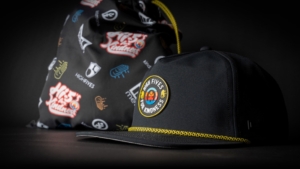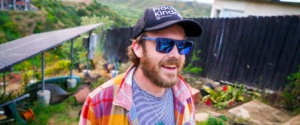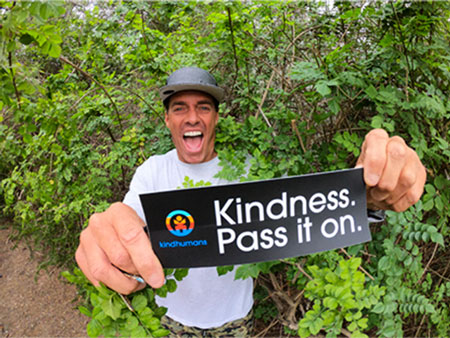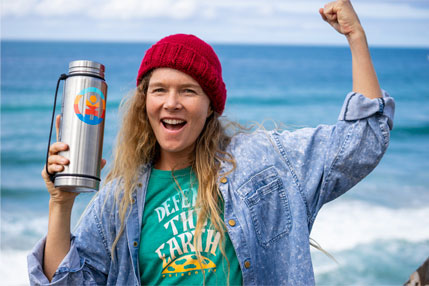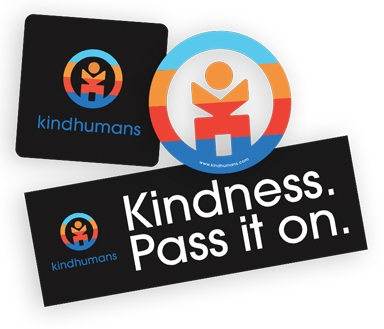
The Truth About Sunscreen
Tips and TricksThe Truth About Sunscreen
The sun is out, the kids are out of school, and you have plans for camping under the stars, hitting the beach, pool and lake, and exploring mountains, valleys and beyond. Whatever our summer plans are, hopefully you’re outside, soaking in the sun and pure Vitamin D.
While sunshine is good for the soul, it can cause extensive damage to our bodies, especially if we’re not protecting ourselves from harsh UVB and UVA rays. Protecting your skin and your kids are a priority. But did you know that ingredients found in common sunscreens may be just as bad, if not worse than sun exposure?
Even more, common sunscreen ingredients are killing our ocean’s reefs. Reefs are incredibly important—they support ecosystems and biodiversity, acting as sources of food for thousands of sea creatures (in fact about 25% of all marine life depends on coral reefs). Reefs support local economies, providing jobs and income for ocean communities. But sunscreen ingredients like butylparaben, a preservative, have been shown to cause coral bleaching, which can be deadly to a reef. Other harmful ingredients include: 3-Benzylidene camphor, 4-Methylbenzlidene, Octocrylene, Benzophenone-1, benzophenone-8, OD-PABA, nano-titanium dioxide, nano-zinc oxie, octinoxate, oxybenzone.
It doesn’t end with just reefs, though. These chemicals are terrible for other marine life as well, negatively affecting green algae, mussels, sea urchins, fish and dolphins.
So Now What?
You’re busy, exploring the world, gathering with your community and hopping from one summer activity to the next. It’s difficult to dive into all the research, and it takes time—something not many families have.
Well, we’ve done all the research for you! And in our Marketplace for Good, we’ve curated our favorite sunscreens that are safe for your body and won’t harm the planet.
We also know that sometimes you need to grab sunscreen on the fly. That’s why we’ve put together this guide, so you’re informed, knowing which ingredients will and won’t cause harm to you or the ocean.
The Truth About SPF
Reports of skin cancer, in the form of melanoma (the deadliest kind) are on the rise. There is growing evidence that sun exposure is one factor. In fact, both UVA (ultraviolet-A) and UVB (ultraviolet B) exposure have been linked to melanoma. It’s safe to say that when we’re looking at SPF numbers, we’re doing so to protect ourselves and our children from cancer.
Unfortunately, according to The Environmental Working Group, SPF numbers do not accurately reflect sunscreen effectiveness. Their research states that, “a good sunscreen will provide equal broad-spectrum protection against both UVA and UVB rays. However, the SPF value reflects only how well a product will protect from UVB rays, the main cause of sunburn and non-melanoma skin cancers, such as squamous cell carcinoma (von Thaler 2010). SPF values do not reflect a product’s ability to protect from other harmful UV rays, such as UVA, which penetrate the skin more deeply and are associated with skin aging and cancer.”
Yikes! That means that even when you are using SPF 50+ you’re STILL not fully protected against UVA rays. In addition, SPF 50+ sunscreens harbor higher amounts of harmful chemicals, which your skin absorbs. Australians know this well—they’ve capped their SPF value at 30.
So what’s safe and what’s not?
Steer Clear of These Sunscreen Ingredients
Oxybenzone, homosalate + octocrylene: Three organic UV filters that the European Commission has determined unsafe, in the current concentrations they are used. While U.S. companies can include each of these ingredients in their sunscreens at up to 15%, the European Commission recommends no more than 2.2 percent for oxybenzone and 1.4 percent for homosalate.
In addition to these three ingredients, octinoxate, octisalate, and avobenzone have been shown to disrupt hormone functions and cause skin allergies, are absorbed into the skin and have been found in urine and breast milk samples.
A Quick Breakdown
Note that none of these ingredients have been classified as safe + effective by the FDA, as of 2019.
Oxybenzone: Penetrates the skin. Causes hormone disruption, skin allergies and other concerns. Is an endocrine disruptor and can be extremely harmful to children. Evidence increasingly shows that it may be a carcinogen, increasing the risk of breast cancer and endometriosis.
Homosalate: Penetrates the skin. Causes hormone disruption, skin allergies and other concerns. Produces a toxic breakdown of byproducts over time.
Octocrylene: Penetrates the skin. Causes skin allergies and other concerns. Linked to toxicity. Is damaging to coral reefs.
Octinoxate: Penetrates the skin. Causes hormone disruption, skin allergies and other concerns. Animal studies have shown the chemical has hormone effects on the metabolic system and affects thyroid hormone production. Damaging to aquatic wildlife.
Octisalate: Penetrates the skin. May have endocrine effects, weakly binding to the estrogen receptor.
Avobenzone: Penetrates the skin. Causes hormone disruption, skin allergies and other concerns. Has been shown to block the effects of testosterone.
Scary, right? Luckily, there are safe alternatives.
Safe Sunscreen Ingredients
Always opt for cream or balm sunscreen, never sprays. Inhalation of common sunscreen ingredients, even those below, which have been deemed safe, carry carcinogenic concerns.
These ingredients are classified as safe + effective by the FDA, as of 2019.
Titanium dioxide: A naturally occurring mineral that is deemed safe for people to use, and it’s safe for the planet. Absorbs UVB rays and some UVA rays. Do not use with spray-type sunscreens—when titanium dioxide is inhaled, it is classified as a possible carcinogen.
Zinc oxide: A naturally occurring mineral that is broad spectrum, absorbing equal amounts of UVB and UVA rays.

Having Fun in the Sun—the Safe Way
Don’t rely solely on sunscreen to protect your skin. Wear hats and breathable long sleeves and pants. Invest in a beach umbrella, seek shade and wear UV sunglasses. But when these options aren’t viable, choose these safe sunscreens instead.
MANDA is committed to making protective, long-lasting, responsibly-made sun protection. For full body protection in a smooth, creamy lotion texture, try MANDA Organic Sun Creme. For outdoor adventurers who get after the day, opt for Organic Sun Paste that stays on longer and protects against wind, water and sweat.
Raw Elements sunscreens preserve coral reefs with formulas that are gentle enough for a new born baby, yet can stand up to the elements and demands of extreme athletes. Try their SPF 30 Face + Body Lotion in a plastic-free tin for UVA-UVB true broad spectrum protection. For babies and kids, we love their SPF 30 Sunscreen Stick that’s hypoallergenic and features gentle ingredients such as coconut oil, chamomile, calendula and sunflower seed oil, making it light, creamy and easy to apply without running or stinging the eyes. Other safe products include Baby + Kids Sunscreen Lotion, Herbal Rescue Lip Balm, Lip Rescue Sunscreen, and SPF 30 Tinted Facial Moisturizer.
Congratulations! You’re now armed with the information you need to keep you, your family and the ocean’s wildlife safe. Now go seize the summer!
Sources:



